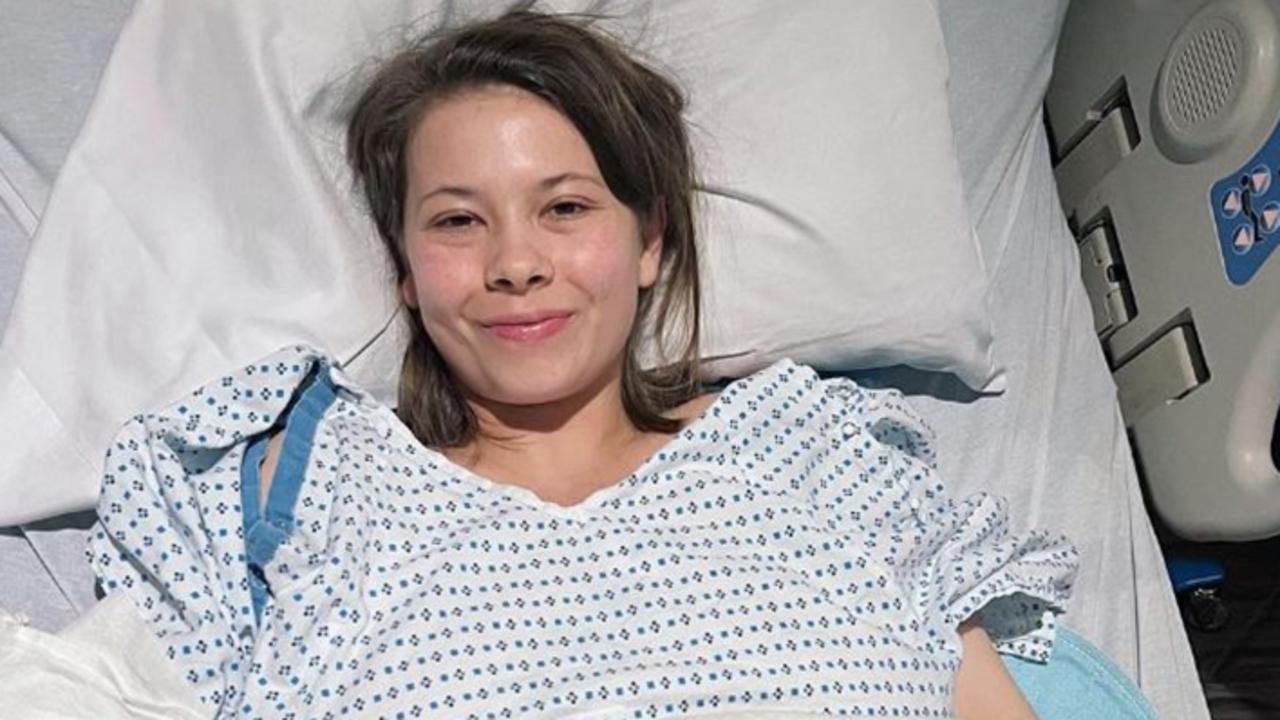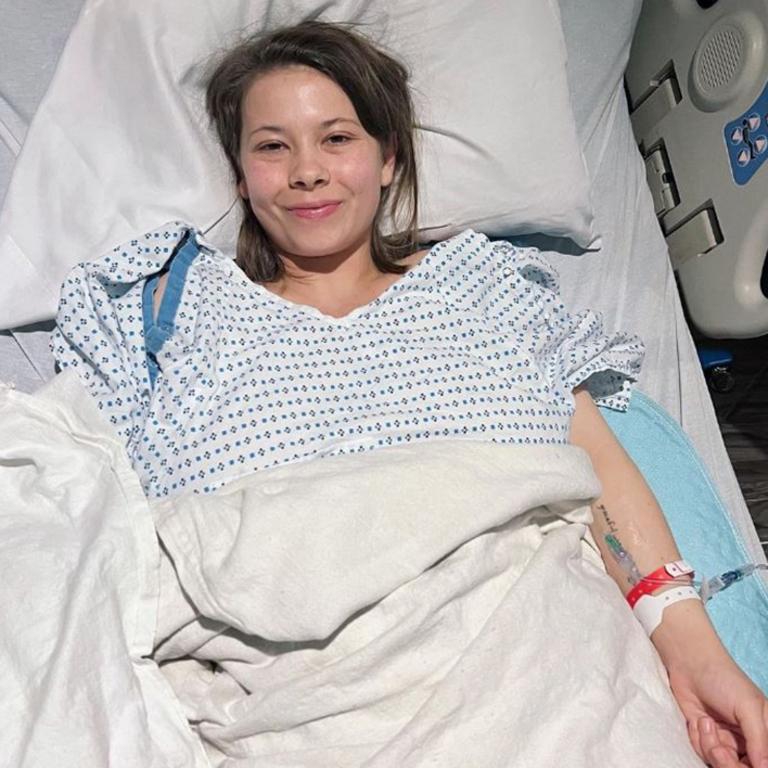Bindi Irwin’s endometriosis battle exposes huge issue Aussie women face
Bindi Irwin’s decision to share her diagnosis has been met with an overwhelming response, shining a light on a debilitating issue thousands of Aussies face.

Bindi Irwin’s decision to share her endometriosis diagnosis has been met with an overwhelming response, shining a light on a debilitating issue that thousands of women suffer with in silence.
The much-loved Australian conservationist went public on Wednesday with the private health battle – one her younger brother Bob said has caused her a “decade of pain”.
Posting a candid photo of herself in a hospital bed to Instagram, the 24-year-old mum-of-one revealed she had been living with “insurmountable fatigue, pain & nausea” for the past 10 years due to endometriosis.
The chronic condition causes tissue similar to the lining of the uterus (endometrium) to grow outside of the organ. The tissue, which has been found on every major organ of the body, often spreads to the bowel and fallopian tubes, causing extreme pain, heavy bleeding, and in many cases, infertility. There’s also no known cure.
Despite an estimated one in nine people with uteruses in Australia suffering from the issue, it’s notoriously difficult to get a diagnosis – research by Endometriosis Australia found it takes an average 6.5 years – and remains incredibly misunderstood. Women often recall being laughed out of hospitals, denied treatment, or told that nothing can be done.

“A doctor told me it was simply something you deal with as a woman and I gave up entirely, trying to function through the pain,” Irwin said, adding that it was the encouragement of a friend that made her decide to undergo surgery for the condition.
“Going in for surgery was scary but I knew I couldn’t live like I was. Every part of my life was getting torn apart because of the pain. To cut a long story short, they found 37 lesions, some very deep & difficult to remove, and a chocolate cyst.”
She also shared her doctor’s heartbreaking first words to her after the surgery: “How did you live with this much pain?”
Thousands of women took to Irwin’s post, thanking her for “validating” their own experiences.
“It meant THE WORLD to me that you shared this. I find very little understanding in my immediate world … which isn’t my loved ones fault … they don’t get it. But totally in part of my doctor’s fault, because they never believe me when I say THE PAIN IS INSUFFERABLE,” one wrote.
“They minimise. It’s so frustrating. Reading this just shows me I’m telling the truth. I’m not alone. And there are people who UNDERSTAND my struggle. That validation alone is soothing.”
“A very timely reminder – on International Women’s Day – to consider the medical gaslighting that women regularly endure and how we are so often told that pain is normal and just part of being a woman,” commented another.
“So glad you have found validation and treatment after such a long road.”
“@bindsueiwrin thank you for sharing your experience. I’m so sorry it took so long to be taken seriously. I was diagnosed 6 months ago after 8 years of suffering and asking for help,” a third said.
“Medical gaslighting is especially awful surrounding menstruation and reproductive healthcare. Wishing you recovery and attentive physicians in your management going forward.”
Bindi Irwin has revealed she has been battling endometriosis for 10 years, suffering "insurmountable fatigue, pain and nausea". @BHustwaite has had her own battle with the condition, and joins us.#TheProjectTVpic.twitter.com/xdRo4HRQdk
— The Project (@theprojecttv) March 8, 2023
Appearing on The Project last night, presenter and author of How to Endo, Bridget Hustwaite, recalled a female GP “flat out tell(ing) me in 2017 – a year before I had my surgery – that I don’t have endometriosis and others have it worse than me”.
“That was pretty shocking coming from a female GP – I was actually recommended to see her for this issue. Sadly it’s just a really common issue,” Hustwaite said.
“Endo is invisible, so often on the external you might look like – and, you know, Bindi is such a happy-go-lucky person, as am I – when we go through our day-to-day jobs, you probably can’t tell the chaos and what we’re dealing with inside. And there’s just sadly so much misinformation still out there about endo.”
The only reliable way to diagnose endometriosis is through invasive laparoscopic surgery, with further surgery – ablation or (more preferable) excision – to remove the disease the most common treatment.
Irwin herself acknowledged she’s “aware of millions of women struggling with a similar story”.
“There’s stigma around this awful disease. I’m sharing my story for anyone who reads this and is quietly dealing with pain and no answers. Let this be your validation that your pain is real and you deserve help. Keep searching for answers.”






